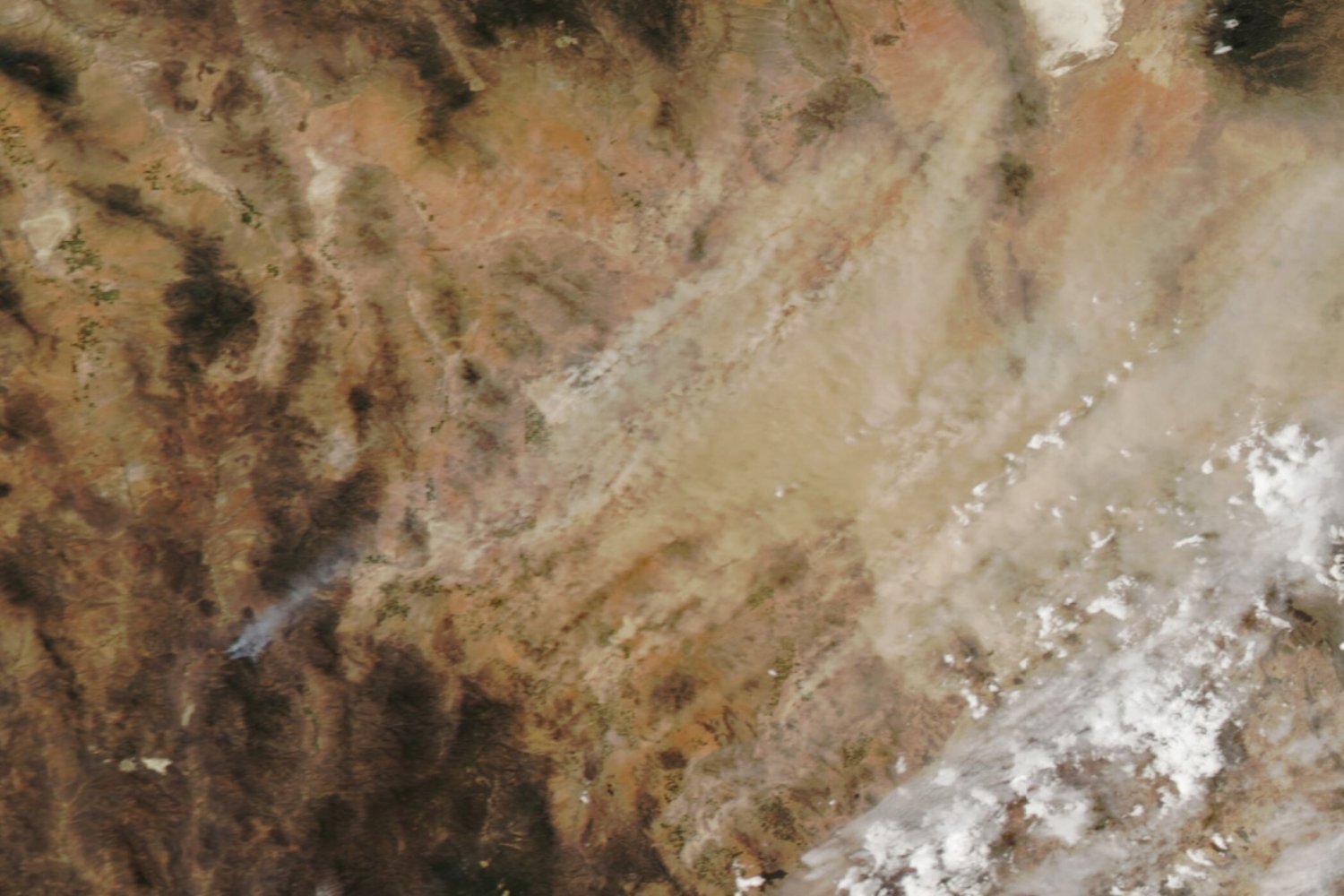Dusty Conditions in the Borderplex Region
Residents of El Paso, Las Cruces, and Ciudad Juárez may feel like they’re breathing in the Chihuahuan Desert due to the exceptionally dusty conditions. The Borderplex region is indeed experiencing its most severe dust season since the devastating Dust Bowl era, which occurred about a century ago in North America.
On April 27, NASA’s Aqua satellite captured an image of the widespread airborne dust from low-Earth orbit. The large dust clouds are part of a series of ongoing storms affecting the Borderplex, a transnational area comprising southern New Mexico, West Texas, and the Mexican state of Chihuahua. The imaged storm is the latest in a sequence of events that have been lifting dried-up lake beds and parched soil into the southern skies.
According to Thomas Gill, an environmental scientist at the University of Texas at El Paso, this year’s drought-exacerbated dusty season is “truly exceptional – one for the record books.” Gill has been tracking dust activity globally and specifically in the Borderplex for decades. In a NASA Earth Observatory release, he shared his expertise on the matter.
The storm captured in the image is the tenth “full-fledged” storm of the year, with a full-fledged event being a storm that reduces visibility to less than half a mile, as explained by Gill. This is more than five times the average of 1.8 storms per year, making 2025 the worst dust season since 1936, when the Dust Bowl swept America and brought 11 storms to El Paso.
The cause of the numerous storms this year can be attributed to a combination of drought and record-breaking wind. March was the windiest month in the region in over 50 years, and the area is experiencing the worst drought in at least a decade, according to Gill. The current conditions are certainly a challenge for those with allergies.
Dust storms are not just a nuisance; they also have significant consequences. These events contribute to traffic accidents, increase the risk of cardiorespiratory problems, and may worsen the spread of Valley Fever, a fungal infection. Gill and his colleagues estimate that dust storms result in over $150 billion in damage nationally each year, affecting farmers, the energy and healthcare industries, and households particularly hard.
NASA’s satellites and modeling tools are aiding scientists in monitoring and understanding the movement of dust. According to Santiago Gasso, an atmospheric scientist at the University of Maryland based at NASA’s Goddard Space Flight Center, one March storm even sent particles all the way to Greenland, as mentioned in the same NASA Earth Observatory release.
As of now, the Borderplex has experienced 28 dusty days in 2025, exceeding the annual average of 22 over the last quarter-century. More dust is forecasted for the region this weekend, so it may be wise to postpone cleaning your windows if possible.
Source Link




